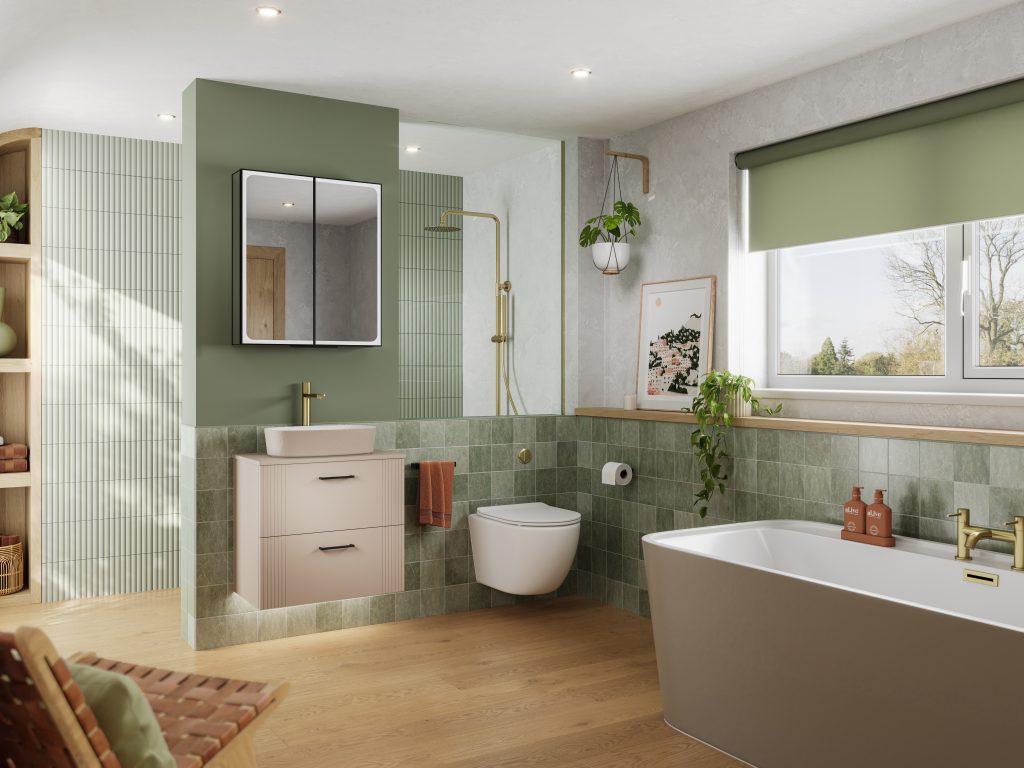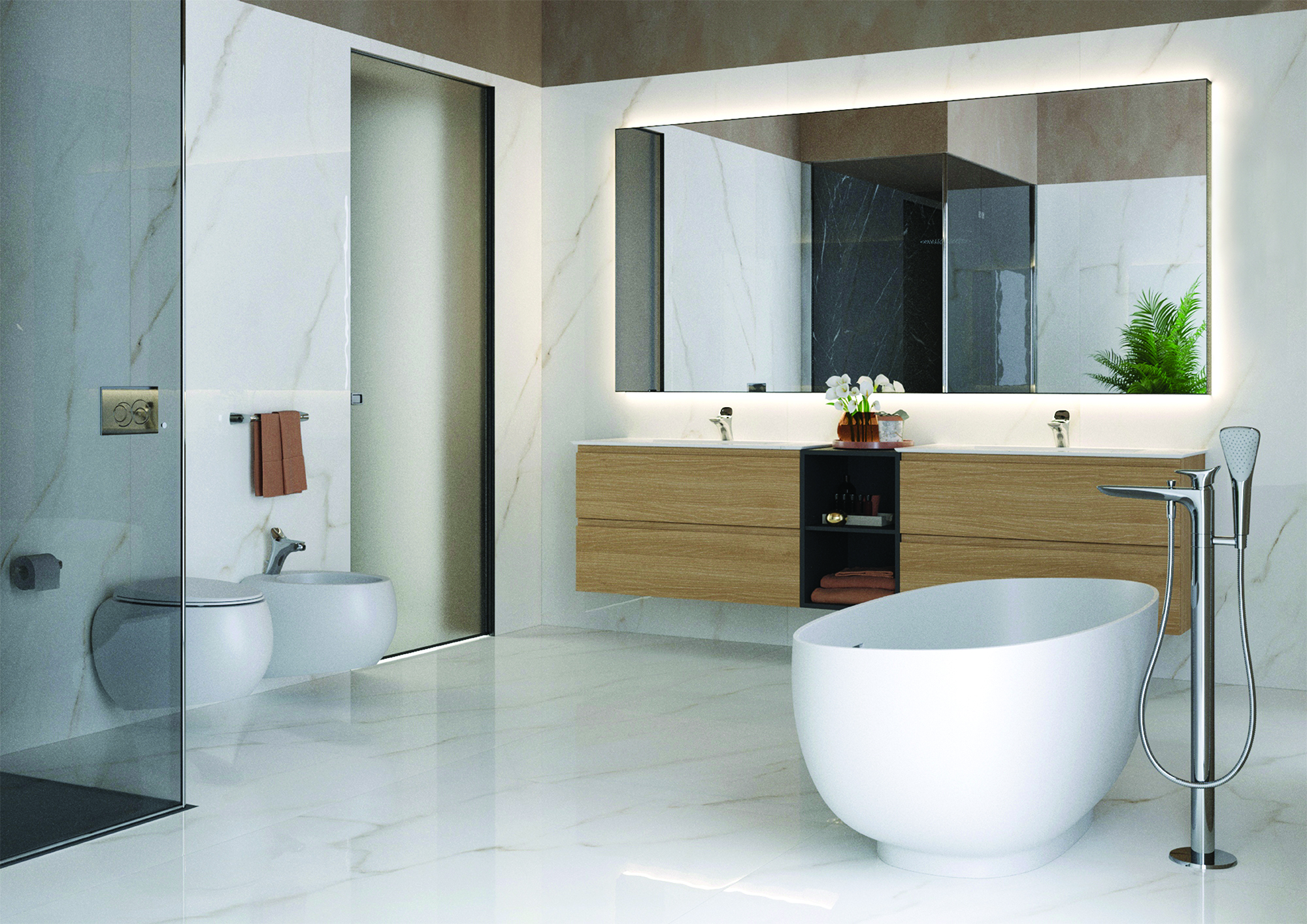As we age, our homes need to adapt to our changing needs, and nowhere is this more important than in the bathroom. For seniors, a standard bathroom can present a myriad of challenges, from slippery floors to inaccessible fixtures. These obstacles not only make daily routines difficult but can also pose significant safety risks.
In this guide, we’ll delve into the unique needs of the elderly when it comes to bathroom design and functionality. We understand that mobility, safety, and accessibility are paramount. That’s why we’re here to offer you expert advice and practical solutions for transforming your bathroom into a safe, comfortable, and accessible space for the senior members of your family. From smart layout designs to essential safety features, we’ll cover everything you need to know to make informed decisions about your bathroom renovation project.

Understanding the Needs of the Elderly
When it comes to mobility bathroom design, understanding the specific needs of the elderly is crucial. As we age, our mobility and physical capabilities often decrease, making everyday tasks more challenging and hazardous. Bathrooms, in particular, can become spaces of discomfort and risk for seniors due to:

Mobility Challenges: Many seniors face difficulties with balance and movement, making navigating a standard bathroom a risky task. The risk of slips and falls is significantly higher, and the consequences can be severe.
Vision and Perception: Age-related changes in vision and perception can make it difficult to navigate poorly lit or cluttered spaces. This emphasizes the need for clear, well-lit paths and minimal obstacles.
Accessibility Needs: The standard bathroom setup is often not adapted to the needs of those with limited mobility. High bathtubs, low toilets, and tight spaces can make independent use challenging and sometimes impossible for seniors.
Understanding these challenges is the first step in creating a safe and accessible bathroom. It’s not just about adding safety features; it’s about rethinking the space to cater to the specific needs of the elderly. This involves considering factors like ease of movement, clear visibility, and effortless access to bathroom fixtures.
Bathroom Renovations for Elderly: Key Considerations
Renovating a bathroom for elderly individuals involves several key considerations to ensure the space is both functional and safe, including:
Layout and Design: The goal is to create a bathroom that allows easy navigation and maneuverability. This might involve widening doorways for wheelchair access, creating open spaces for unobstructed movement, and strategically positioning fixtures to minimize the need for excessive movement.
Non-Slip Flooring and Surfaces: One of the most critical aspects to consider is the installation of non-slip flooring. Slippery surfaces are a major hazard, especially in a wet environment like a bathroom. Non-slip floor tiles can significantly reduce the risk of falls.

Grab Bars and Handrails: Installing grab bars and handrails in key areas of the bathroom can provide vital support for seniors. This includes near the toilet, in the shower area, and alongside the bathtub. It’s crucial that these are professionally installed to ensure they can support the weight and provide adequate assistance.
Walk-in Showers: Traditional bathtubs and showers can pose significant challenges. Wetrooms or Walk-in showers, with their low threshold, are excellent alternatives, providing easier and safer access. Features like built-in seats and hand-held showerheads can further enhance safety and comfort.
Toilet Accessibility: Considerations like elevated toilet seats and the installation of grab bars around the toilet can make a significant difference in ease of use and safety. These adaptations help in maintaining independence and dignity in personal care.
How to Remodel a Bathroom for the Elderly?
Remodelling a bathroom to suit the needs of the elderly requires careful planning and consideration. Essential steps in this thoughtful process include:
1. Assessing the Current Bathroom: Start by evaluating the existing bathroom setup. Identify potential hazards and areas that are particularly challenging for elderly users. This assessment will help in determining the most crucial areas needing renovation.
2. Planning the Renovation Process: Once the needs are identified, it’s time to plan the renovation. This includes deciding on the layout, choosing the right materials, and determining the specific adaptations required. It’s important to prioritise changes that will have the most significant impact on safety and accessibility.
3. Working with Professionals: Bathroom renovations, especially for the elderly, often require specialised knowledge. Hiring bathroom specialists experienced in elderly-friendly bathroom renovations can ensure that the modifications are practical, safe, and compliant with any relevant regulations. It’s also beneficial to collaborate with occupational therapists or other experts who can provide insights into the unique needs of elderly individuals.
Making Your Bathroom Accessible: Budget-Friendly Options
Creating an elderly-friendly bathroom doesn’t always require a complete overhaul. There are several cost-effective modifications that can significantly enhance accessibility and safety:
Overview of Adaptation Process: Start by identifying the most pressing needs and potential hazards in your current bathroom setup. This will help you prioritise the modifications that will make the biggest impact.

Customisation Based on Individual Needs: Each person’s needs are unique, so it’s important to customise the adaptations accordingly. Consider factors like mobility, vision, and personal preferences when planning the renovations.
Cost-Effective Modifications: There are numerous budget-friendly options for making a bathroom safer for the elderly. This includes simple additions like anti-slip mats, installing basic grab bars, and adding adequate lighting. These small changes can make a big difference in safety and accessibility.
Prioritising Renovations: When working with a limited budget, prioritise the changes that are most essential for safety and accessibility. For many, this could mean focusing first on areas like the shower or toilet, where the risk of accidents is higher.
Bathroom Renovation Grants for the Elderly
In Ireland, several grants are available to assist with the costs of making bathroom renovations for the elderly. These grants are designed to help make homes more accessible and safer for older individuals or those with disabilities. Here’s an overview of the main grants available in Ireland, each offering specific support:
Housing Adaptation Grant for Older People and People with Disabilities: This grant helps cover the cost of adapting a home to make it more suitable for elderly residents or those with a disability. It includes modifications like bathroom adaptations for better accessibility. Eligibility depends on household income, and the application involves providing a detailed description of the work and a cost quotation.
Mobility Aids Grant Scheme: This scheme provides grants for works designed to address mobility problems in the home. It can cover the costs of minor renovations, including basic bathroom modifications like installing grab bars or accessible showers.
Housing Aid for Older People Scheme: Aimed at older people living in poor housing conditions, this scheme can finance repairs and improvements, including necessary bathroom upgrades to ensure safety and accessibility.
For each of these Housing Adaptation Grants, eligibility criteria and application processes vary, so you should seek professional guidance to understand the specific requirements and ensure a successful application.
Making Your Bathroom Safe for Seniors: Practical Tips
Ensuring safety in the bathroom is paramount for elderly individuals. Here are some final practical tips to create a safer environment:
Slip-Resistant Surfaces: Install non-slip mats in the shower and bath areas and consider slip-resistant flooring to reduce the risk of falls.
Properly Installed Grab Bars: Place grab bars near the toilet, shower, and bathtub areas. Ensure they are securely fixed to support weight and assist in movement.
Adequate Lighting: Improve visibility by installing bright, non-glare lights, especially in critical areas like the shower and near the toilet.
Eliminate Tripping Hazards: Remove any obstacles that could cause tripping, such as loose rugs or uneven floor tiles.

Accessible Storage: Ensure that toiletries and other essentials are within easy reach, reducing the need to stretch or bend over.
By implementing these simple yet effective measures, you can significantly enhance the safety and accessibility of your bathroom for senior family members.
Empowering Independence: A Safer Bathroom for Seniors
In this guide, we’ve explored the vital aspects of bathroom renovations for the elderly, from understanding their unique needs to practical renovation tips and information on available grants. Making your bathroom more elderly-friendly is not just about safety; it’s about creating a space that allows seniors to maintain their independence and dignity.
We encourage you to take proactive steps in adapting your bathroom to meet these needs. Whether you’re planning a major renovation or making minor adjustments, every change can make a significant difference in the life of an elderly person.
Start Your Transformation Today
At Odyssey Bathrooms, we specialise in creating bathrooms that cater to all ages and needs, including the elderly. Our team of experts is here to guide you through every step of your renovation project, ensuring a bathroom that is not only beautiful but also safe and accessible.
Contact us today to learn more about how we can help you transform your bathroom into a space that is perfect for every member of your family.
